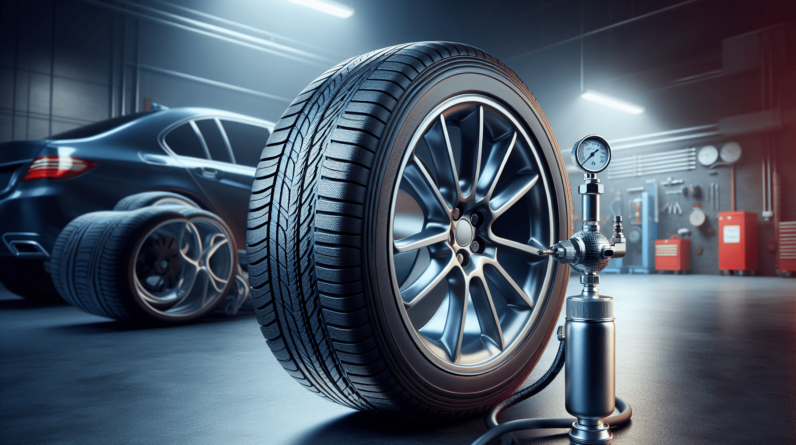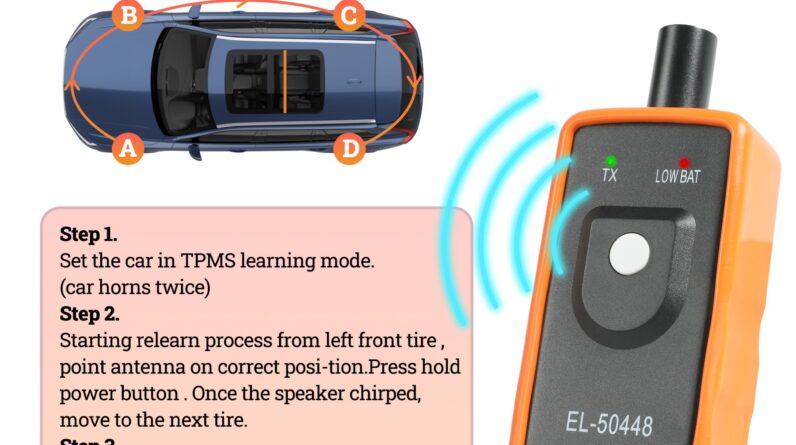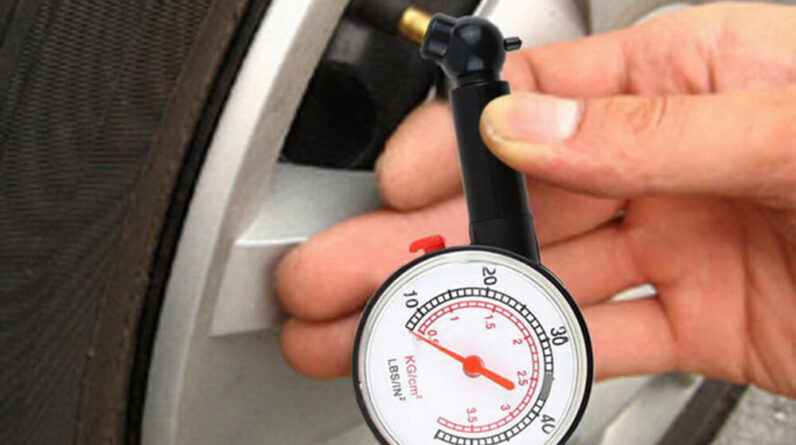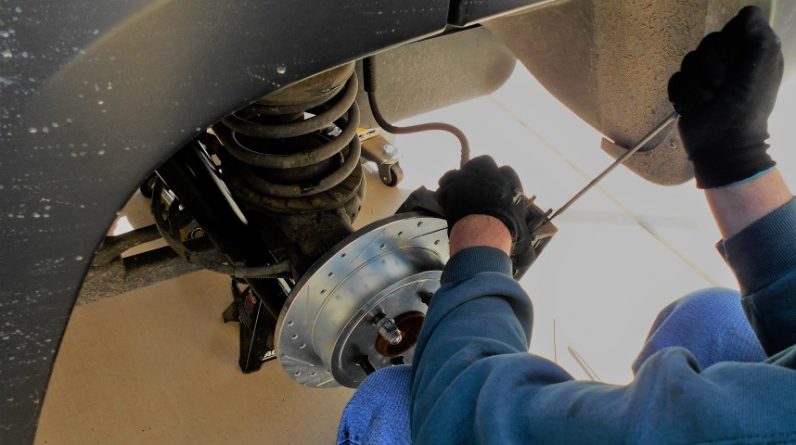
Have you ever wondered how keeping your Tire Pressure Monitoring System (TPMS) in check can improve your vehicle’s safety? In today’s rapidly advancing automotive world, TPMS acts as a vital safety feature that ensures your tires are always at optimal pressure. Proper tire maintenance isn’t just about extending the life of your tires; it’s also about keeping you safe on the road.
Need auto care? Call 913 605-3126 for remote or in-shop services!
What is a TPMS?
A Tire Pressure Monitoring System is an electronic system installed in a vehicle that monitors the air pressure inside the pneumatic tires. If the pressure goes below or above a set threshold, the system alerts you via a warning light on the dashboard. It helps you maintain the right pressure, ensuring better performance and safety.
Types of TPMS
There are two main types of TPMS: Direct TPMS and Indirect TPMS.
| Type | Description |
|---|---|
| Direct | Uses sensors within the tires to monitor pressure levels and send information to your vehicle’s onboard computer. It provides real-time, accurate readings. |
| Indirect | Relies on the anti-lock brake system (ABS) sensors to detect the rotational speed of the tires. It estimates tire pressure based on changes in wheel speed. |
Why TPMS is Essential
Your TPMS is more than just a convenient feature; it plays a crucial role in your overall driving experience. Under-inflated or over-inflated tires can lead to various issues, ranging from poor fuel economy to catastrophic tire failure. By keeping your TPMS in check, you’re taking a big step toward ensuring a smoother, safer ride.
The Safety Benefits of Keeping Your TPMS in Check
Now that we know what TPMS is and how it works, let’s explore the numerous safety benefits it provides.
Preventing Blowouts
Under-inflated tires are a leading cause of blowouts. When your tire pressure is lower than recommended, the tire walls flex more than they should, generating excessive heat. This can eventually lead to tire failure or a blowout. A functional TPMS will alert you to low-pressure levels, enabling you to take corrective action before it’s too late.
Enhancing Control and Handling
Correct tire pressure is significant for vehicle control and handling. Low pressure can cause sluggish response times and less precise steering, making it harder to navigate turns or abrupt maneuvers. Over-inflation, on the other hand, can reduce tire grip, making your vehicle more susceptible to slipping and sliding, especially in wet conditions. Regular TPMS checks help maintain optimal tire pressure, improving your vehicle’s responsiveness and overall handling.
Reducing Stopping Distances
Properly inflated tires have better traction, contributing to shorter stopping distances. Under-inflated tires increase the surface area in contact with the road, decreasing traction and lengthening the distance required to bring the vehicle to a complete stop. This can be particularly dangerous in emergency situations. With an active and well-maintained TPMS, you’ll get timely alerts that help maintain proper tire pressure, thereby enhancing braking efficiency.
Optimizing Tire Longevity
Tires are expensive, and maximizing their lifespan is a smart move economically. Under or over-inflation can cause uneven tire wear. For instance, under-inflated tires tend to wear out on the edges, while over-inflated tires wear out in the center. A TPMS ensures your tires remain at optimal pressure, leading to more uniform wear and a longer lifespan.
Improving Fuel Efficiency
Did you know that tire pressure can significantly impact fuel efficiency? When your tires are under-inflated, they create more rolling resistance, causing your vehicle to consume more fuel. According to the U.S. Department of Energy, properly inflated tires can improve gas mileage by up to 3%. Your TPMS helps maintain the correct pressure, which in turn enhances your vehicle’s fuel economy.
Environmental Benefits
Keeping your tires properly inflated doesn’t just save you money; it’s also good for the environment. Reduced fuel consumption means lower greenhouse gas emissions. Regularly checking your TPMS contributes to more efficient fuel use and a smaller carbon footprint. It’s a win-win situation for both you and the planet.
How to Maintain Your TPMS
A well-functioning TPMS requires regular attention and maintenance. Just like any other part of your vehicle, it can wear out or malfunction over time. Here’s how you can ensure it stays in tip-top shape.
Regular Inspections
Conduct regular visual inspections of your tires for any signs of wear and tear. This can give you a heads-up if your TPMS might need attention. Look for cracks, punctures, or uneven wear, and ensure your tires are free of any debris.
Sensor Batteries
The sensors in a direct TPMS have batteries that can wear out. These batteries typically last about 5-10 years. If your TPMS warning light stays on even after inflating your tires to the correct pressure, the sensor batteries might need replacing.
Professional Servicing
While you can perform basic checks at home, it’s essential to have your TPMS professionally inspected during regular maintenance. A qualified technician can ensure the system is calibrated correctly and functioning optimally.
Common TPMS Issues and Troubleshooting
Even though TPMS is a reliable system, it’s not immune to issues. Knowing the common problems and their solutions can save you from minor inconveniences and potential dangers.
False Alerts
Sometimes, your TPMS might send you a false alert. This can happen due to a variety of reasons such as extreme temperature changes or interference from other electronic devices. If you receive an alert, double-check the tire pressure with a gauge. If the pressure is correct, you might need to recalibrate the TPMS or consult a professional.
Sensor Damage
Your TPMS sensors can get damaged due to rough terrain, aggressive driving, or during tire changes. If you notice your TPMS warning light frequently flashing or staying on, it could indicate sensor damage. In this case, it’s best to have the sensors checked and replaced if necessary.
Calibration Errors
If your TPMS isn’t calibrated correctly, it can cause inaccuracies in the readings. This might lead to unnecessary alerts or failure to alert when pressure is genuinely low. Calibration errors can generally be fixed during a professional service.
DIY Tips for TPMS Maintenance
While professional servicing is essential, there are simple steps you can take at home to ensure your TPMS remains in good condition. Here are some DIY tips to help you out.
Regular Pressure Checks
Even with a TPMS, it’s wise to manually check your tire pressure at least once a month. Use a reliable tire pressure gauge and ensure all tires are inflated to the manufacturer’s recommended level. This double-check helps verify the accuracy of your TPMS.
Resetting the TPMS
Consult your vehicle’s owner manual for instructions on how to reset the TPMS. This is particularly useful after inflating your tires or rotating them. A reset helps the system recalibrate and provide accurate readings.
Tire Rotations
Regular tire rotation helps ensure even tire wear, which is beneficial for both your tires and your TPMS. Uneven tire wear can affect the TPMS readings, leading to inaccurate alerts. Check your vehicle’s maintenance schedule for recommended intervals for tire rotations.
Clean the Valve Stems
Dirt and debris can obstruct the valve stems, leading to inaccurate TPMS readings or malfunctions. Regularly clean the valve stems and ensure they have proper caps to keep dirt and moisture out.
Beyond Safety – The Additional Perks
While safety is paramount, keeping your TPMS in check also provides additional perks. These benefits add value to your driving experience.
Enhanced Ride Comfort
Proper tire pressure ensures a smoother ride. Under-inflated or over-inflated tires can cause a bumpy and uncomfortable ride. By maintaining correct tire pressure, your vehicle’s suspension system can work more effectively, absorbing road shocks better and providing a comfortable ride.
Better Vehicle Performance
TPMS ensures your tires are always at the correct pressure, which optimizes overall vehicle performance. Properly inflated tires offer better traction, which is beneficial during acceleration, braking, and cornering. This means your vehicle operates more efficiently and handles better on the road.
Legal Compliance
In many countries, TPMS is a legal requirement, especially for newer vehicles. Keeping your TPMS functional ensures you’re complying with local regulations, avoiding potential fines or penalties. This legal aspect underlines the importance of keeping the system in check.
The Evolution of TPMS Technology
Technology is continually evolving, and TPMS is no exception. Understanding the advancements in TPMS can help you appreciate its importance and the need for regular maintenance.
Advanced Sensors
Modern TPMS sensors are more sophisticated and offer better accuracy. They can monitor not just tire pressure but also temperature, which provides more comprehensive health stats for your tires. These advanced sensors lead to more accurate alerts and safer driving conditions.
Integration with Vehicle Systems
Newer vehicles have TPMS integrated with other vehicle systems, such as the traction control system and electronic stability control. This integration allows for coordinated responses to various driving conditions, enhancing overall safety. For instance, if the TPMS detects low pressure, it can work in tandem with traction control to adjust handling and maintain stability.
Wireless Communication
Contemporary TPMS relies on wireless communication, eliminating the need for physical connections. This reduces the risk of wiring issues and enhances the reliability of the system. The sensors communicate wirelessly with the onboard computer, providing real-time updates without any lag.
Future Trends
The future of TPMS looks promising with potential advancements like self-inflating tires that automatically adjust to optimal pressure levels. Additionally, advancements in artificial intelligence could lead to predictive maintenance, where the system anticipates issues before they occur, adding another layer of safety.
Myths and Misconceptions
Despite its importance, TPMS often falls victim to various myths and misconceptions. Clearing these up can help you fully appreciate its value.
Myth: TPMS Replaces Manual Checks
One common misconception is that having a TPMS means you no longer need to perform manual tire pressure checks. While TPMS provides real-time alerts, it doesn’t replace the need for regular manual checks. Think of it as a safety net rather than a substitute.
Myth: TPMS Always Provides Perfect Accuracy
While TPMS technology has advanced considerably, it is not infallible. External factors like temperature changes can affect readings. Always verify dubious alerts with a manual gauge to ensure accuracy.
Myth: Only New Cars Have TPMS
While it’s true that TPMS has become mandatory in newer vehicles, older models can also be fitted with aftermarket TPMS systems. These aftermarket options provide similar safety benefits and are worth considering if your vehicle lacks a built-in system.
Myth: TPMS Maintenance is Expensive
Some think that maintaining TPMS is costly and not worth the investment. However, considering the safety benefits and potential cost savings from avoiding accidents and extending tire life, the investment in maintaining your TPMS is minor in comparison.
Conclusion
Keeping your TPMS in check is a simple yet effective way to enhance your driving safety and overall vehicle performance. From preventing blowouts to improving fuel efficiency, the benefits are manifold. By regularly maintaining your TPMS, you not only ensure a safer drive but also enjoy the additional perks of improved vehicle performance and ride comfort. Next time you see that little warning light, take it seriously. Your safety and the longevity of your tires depend on it.
Invest some time in understanding your TPMS, performing regular checks, and opting for professional servicing when needed. These small steps go a long way in ensuring that you and your loved ones are safe on the road. Your vehicle deserves the best care, and so do you.







